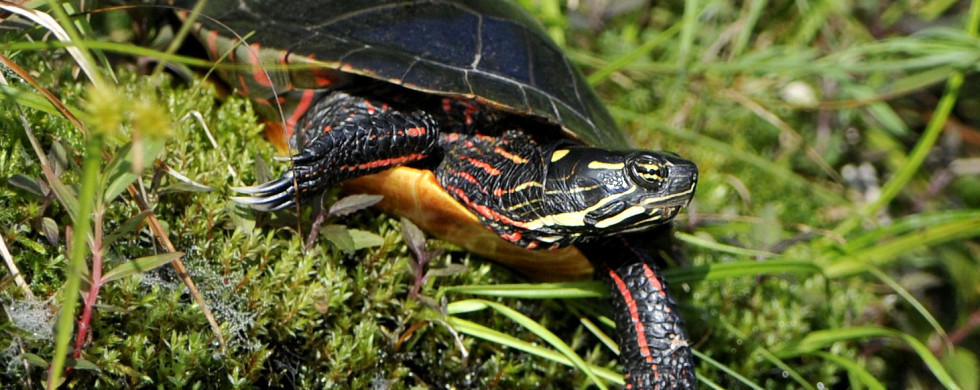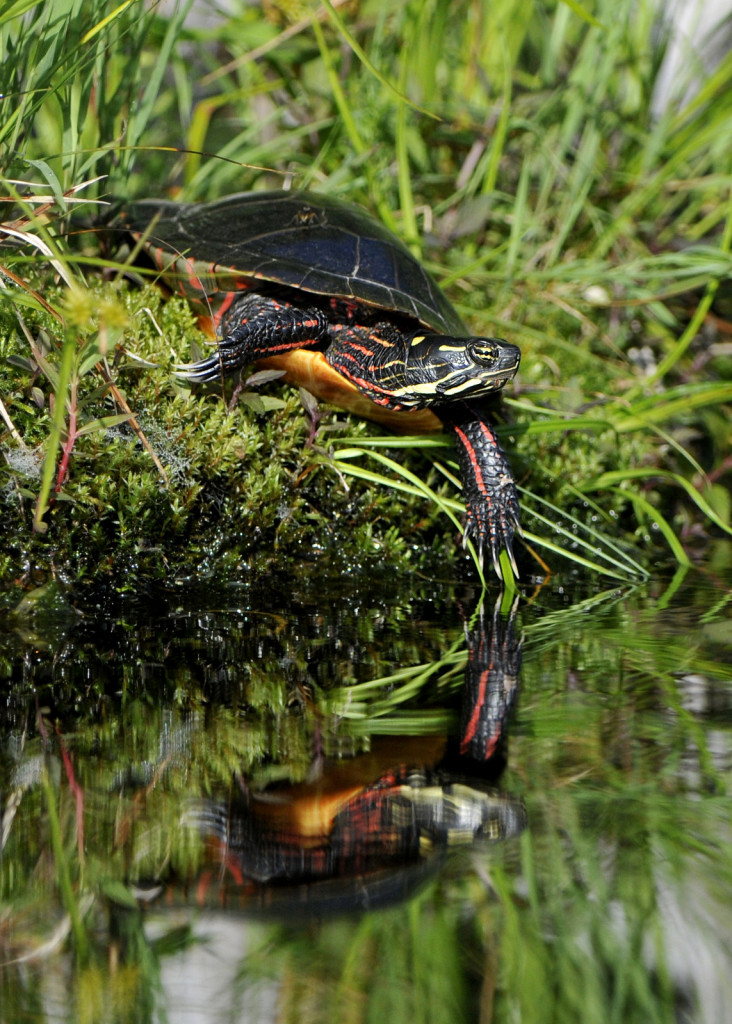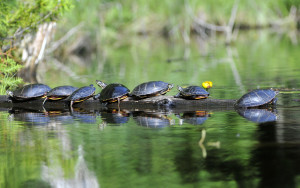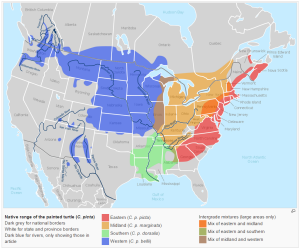
30
2015Painted Turtle
Shot of the Month – June 2015
 Let me tell you, getting a decent picture of a Painted Turtle is tough. This is not to say that they are hard to find — they are by far the most commonly found turtle in North America.
Let me tell you, getting a decent picture of a Painted Turtle is tough. This is not to say that they are hard to find — they are by far the most commonly found turtle in North America.
They are the only turtle whose native range extends from the Atlantic to the Pacific. These guys can be found in 45 US states and 8 of the 10 Canadian provinces.
As a photographer, the challenge is that the painted turtle is most commonly seen basking in the sun in the late morning. This makes for terrible light and harsh reflections off this shiny creature. Also, these turtles are very skittish so it is very hard to get close before they dive into the water. The joys of nature photography ….grumble, grumble…
There are four regionally based sub-species of painted turtle (eastern, midland, southern, western), with each having slightly different color patterns and size. I photographed this Midland Painted Turtle on a quiet pond in Vermont. Check out the map below to see which type may live near you (Only for you New World types).
Painted turtles like fresh water so if you have visited a pond, lake, marsh, or creek in the US or Canada you most likely have seen one of these fellas.
This is one rock ‘n roll-looking turtle — note the KISS-themed red and yellow stripes on their neck, legs, and tail. And that bad-ass black stripe on the yellow eye. Did you notice the claws on this turtle?! Wolverine has nothing on this guy.
All right, settle down. Back to the science. A few other painted turtle tidbits for you:
- Painted turtles can live up to 55 years in the wild. (they rarely do, but they can)
- Females are larger than males. The extra size allows space for egg production.
- In the winter painted turtles hibernate in mud at the bottom of the body of water where they live. They lower their metabolism so much that they do not need to breathe while in this state. In northern climates, they may hibernate from October to March (Now, THAT is a good nap). Turtles also sleep at the bottom of the water each night — during these periods they can absorb some oxygen through their skin.
- Painted turtles eat assorted plants (e.g. duckweed, algae, and water lilies) and also eat earthworms, insects, leeches, snails, crayfish, frogs, and carrion, to name a few delicacies.
- As they are reptiles painted turtles cannot regulate their body heat. To be active their body temperature has to be between 63-73 degrees F. Each day they go through cycles of activity. First, bask in the sun and build up energy. Then go into the water and hunt for something to eat. Being underwater cools them down, so, bask in the sun again. Once warm, go search for food. Cool off. Bask in the sun. Search for food. You get the idea.
- Painted turtles are the “Official Reptile” of four states: Vermont, Michigan, Illinois, and Colorado. I didn’t even know that was a thing.
There you have it, the painted turtle — Mother Nature’s Rock ‘n Roll playing Marvel Comic Superhero who can be readily found chill’n at your local pond. Until next month…
Nikon D300S, Nikon 200-400mm (@ 260 mm; effective 390mm), f/4, 1/2000 s, ISO 400; handheld from Kayak



Gary Kohn
Now that’s how to make science fun…you would have made a great science teacher!